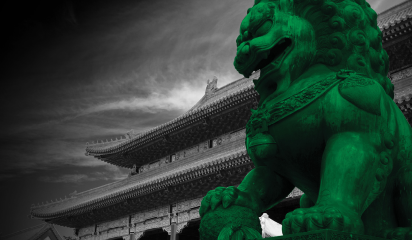Are you preparing to enter the Chinese market? While it’s certainly a large and important market for New Zealand businesses, achieving trade mark protection in China is far from a ‘slam dunk’.
You are not alone…
With the world’s growing middle class becoming rapidly more affluent and driving an increased consumption of goods, it is not surprising that international and local Chinese manufacturers are flocking to register their trade marks with the China National Intellectual Property Administration (CNIPA). As of March 2023, there were more than 40 million valid trade marks registered with CNIPA. By comparison, at the same date, there were only 326,145 live trade mark registrations in New Zealand.
In 2021, 9.45 million trade marks were filed in China (making up 52% of global trade mark filing activity).
Of course, not all these applications will proceed to registration, but data from CNIPA shows the registration rate for trade marks in 2021 and 2022 was about 82%, up from just 56% in 2020.
Not only is it important to ensure you do not infringe one of these many trade mark registrations; if you also want to be one of these successful applicants, it’s important to be smart about your filing strategies, to carve a path through the potential registrability objections, and the myriad of prior marks. In this article, we cover some key considerations for protecting your trade mark in China.
Signs that qualify for registration in China
If you have already filed trade marks in New Zealand, then you may have some familiarity with the requirements for registration.
Like IPONZ in New Zealand, CNIPA nominally accepts trade marks made up of signs including words, letters, numbers, three-dimensional symbols, colour combinations, and sounds or a combination of these signs.
Again, like IPONZ, CNIPA will examine marks on both absolute and relative grounds. This means they will consider whether the marks are sufficiently distinctive to qualify for registration, and whether there are any earlier marks that should be cited as blocks.
But although these broad principles are the same, there are some important differences between the two systems.
Why you need to start the process early
China operates a first-to-file system. This means the person who first applies for a trade mark is presumed to be the legitimate owner. If your mark has been filed by a former distributor for example, they may have better rights than you to your trade mark, even if you have been using it in China, or overseas, for some time. In other words, you only have limited rights to your trade mark in China until you apply to register it.
That’s why the best course of action is to prioritise trade mark protection in China – even if you are not quite ready to go to market.
Another key tip is to conduct a prefiling search. With about 40 million live trade marks on the register, there is a good chance someone may have beaten you to the register and filed a mark that is similar to the one you want to use. Searching before filing lets you know if your mark is going to be available for you to use in China, so you can pivot before launching, and adopt a mark that doesn’t come with an infringement risk, if need be.
If CNIPA rejects your trade mark application because of an earlier similar or identical mark, you will only have a short deadline to do something about it. If you conduct an availability search before filing, you may detect some of these issues in advance, and change your use or filing strategy accordingly, either by adapting the mark, or crafting a description of goods and services that will increase the likelihood of the application being accepted. You may also consider going on the attack to see if you can clear potential obstacles to give the application a clear pathway to acceptance. Forewarned is forearmed.
What could be considered an offensive trade mark in China?
Certain trade marks are proscribed in New Zealand – including those likely to offend a significant section of the public, or those that could be considered offensive to Māori.
Most New Zealand business owners would recognise the types of trade marks that would be pushing the boundaries of offensiveness. But when it comes to China, they may be less familiar with cultural norms, and how a mark may be viewed by Chinese consumers.
China’s Trade Marks Act in particular prevents the registration of trade marks that offend against ‘socialist morals or customs’, or 'unhealthy influences'. For example, a trade mark featuring the word NAKED, while inoffensive from a New Zealand point of view, could be refused in China on this ground as the Chinese examiners could consider NAKED offensive.
What makes a mark ‘deceptive’ in China?
Article 10.1.7 of the Chinese Trade Marks Act prohibits the use of marks which are ‘deceptive or likely to mislead the public’ in terms of the quality, place of production, or other characteristics in the goods or services.
Marks including words such as ‘organic’, ‘natural’, ‘grass fed’, ‘New Zealand’, ‘carbon neutral’ or even ‘honey’ have proved problematic under this ground.
In New Zealand, an application for TRIFECTA ORGANIC NEW ZEALAND BEEF should be registrable for meat. IPONZ will believe this mark will be used for organic beef produced in New Zealand. If the mark was used for non-organic meat, or meat from outside of New Zealand, its use would be misleading, and Fair Trading provisions would apply. But, it is not for the trade mark examiner to delve into.
Not so in China, where an examiner may refuse to register marks that include descriptive words under Article 10.1.7 if they consider use of those marks on goods that do not feature all of these descriptive elements is likely to mislead the public. More concerning, the Act prohibits not just the registration, but also the use of marks that fall foul of this Article. Owners of trade marks that have been assessed as likely to mislead the public could face prosecution and fines.
Ensuring compliance with Article 10.1.7 is complex. The question for the brand owner (or their IP advisor) to consider is: Are there any elements that the examiner could consider deceptive or likely to mislead the public in terms of the quality, place of production, or other characteristics of the goods? If so, can these elements be removed from the mark before filing, or should another mark be chosen.
In summary, seeking to avoid infringement, and overcoming common trade mark objections in China requires specialist knowledge. It’s worth investing in professional advice at the outset.
Want to learn more about China trade mark law?
Join our free webinar on developing and protecting brands in China. In this webinar AJ Park expert Victoria Watts will discuss trade mark protection in China, some of the pitfalls businesses entering the market can experience, and how to avoid those. Register to secure your spot here.
If you have any questions, or need specific advice, our team of China specialists will be happy to help.











